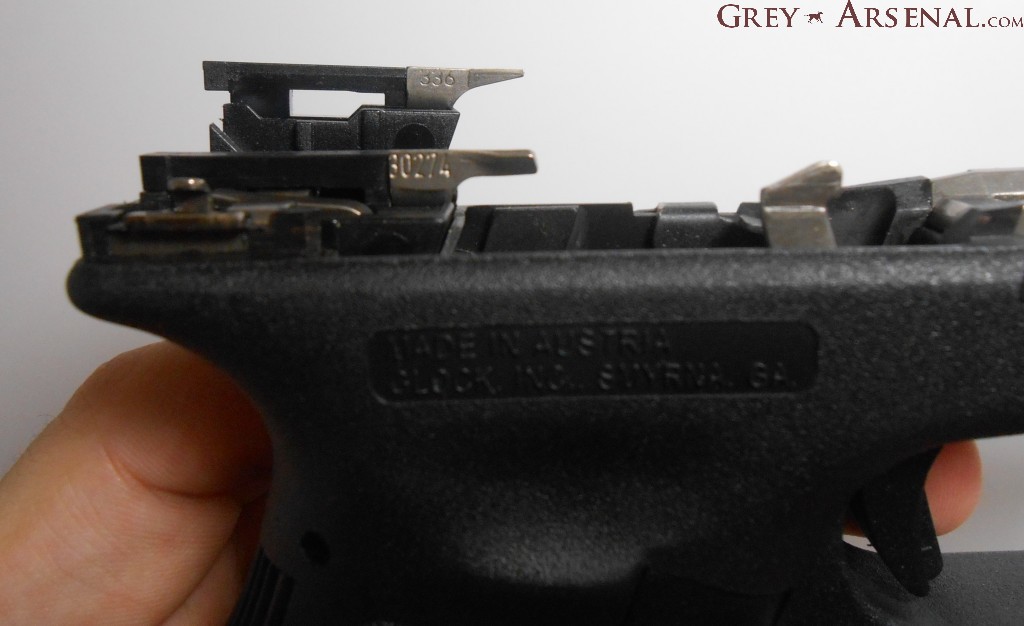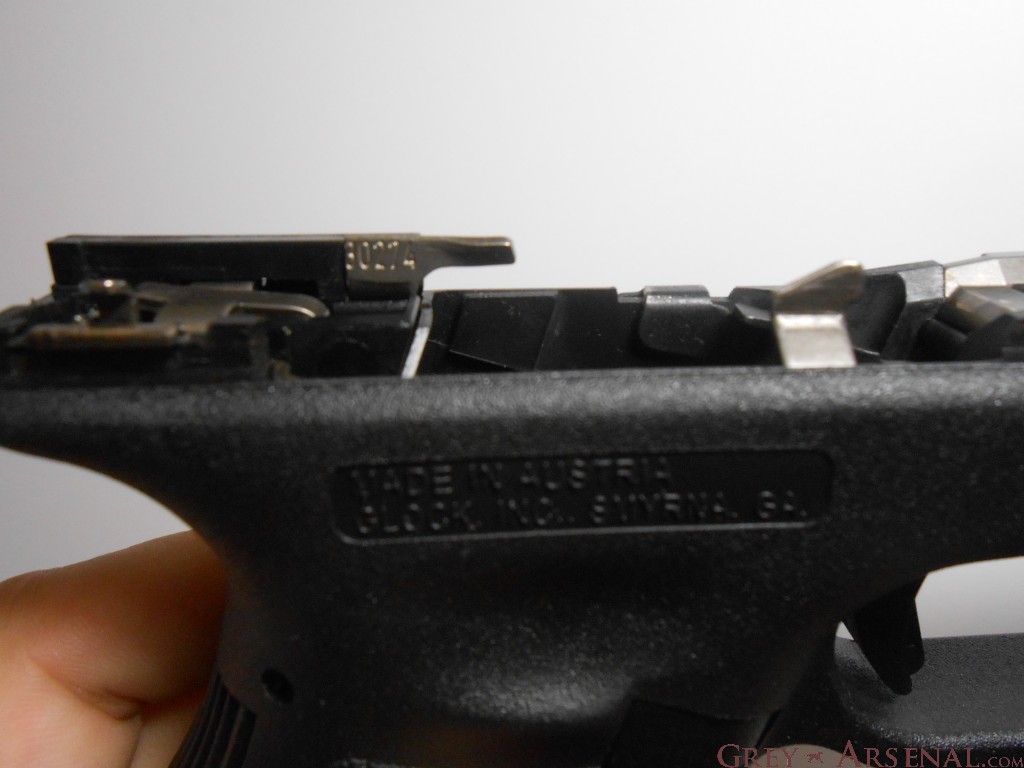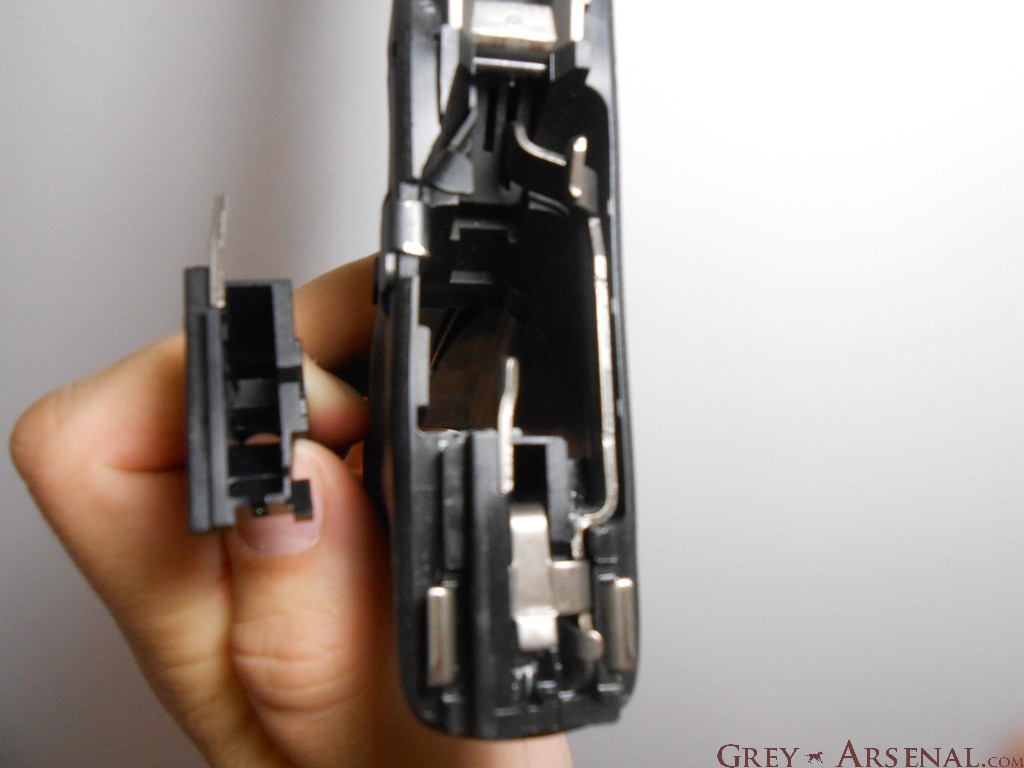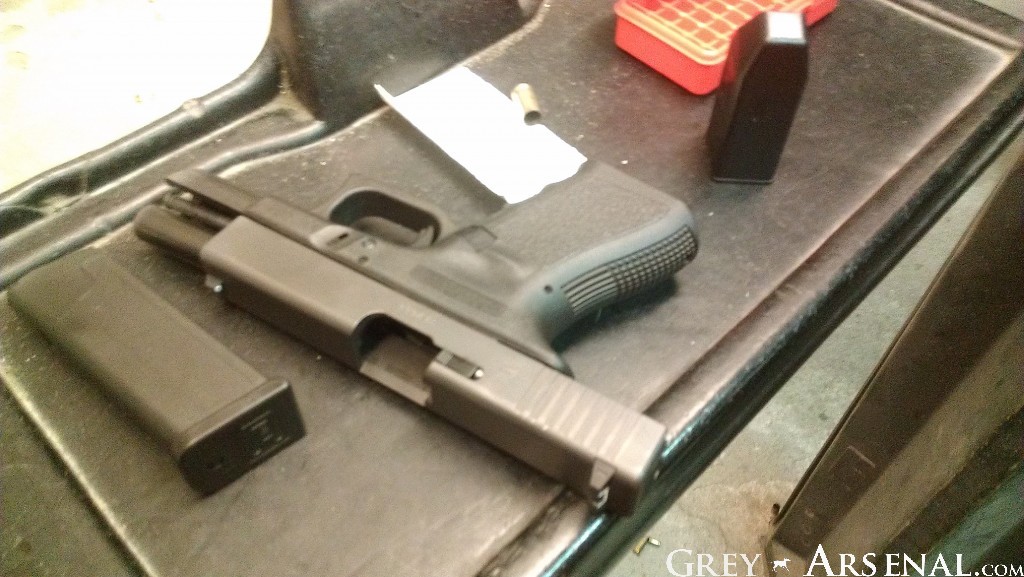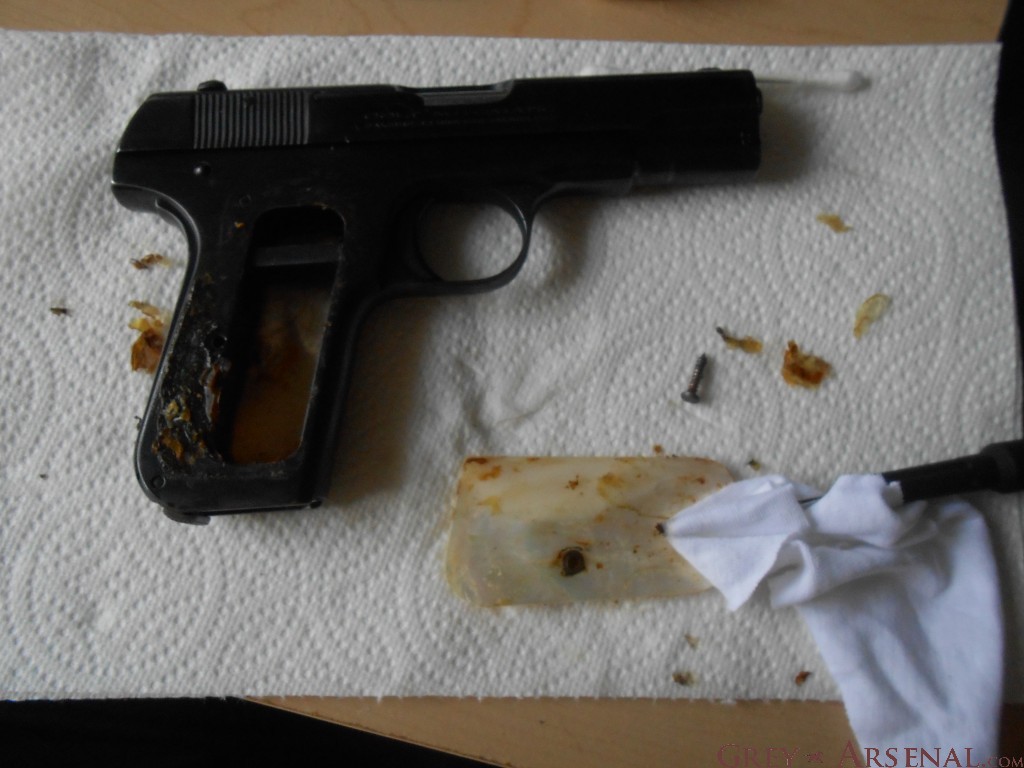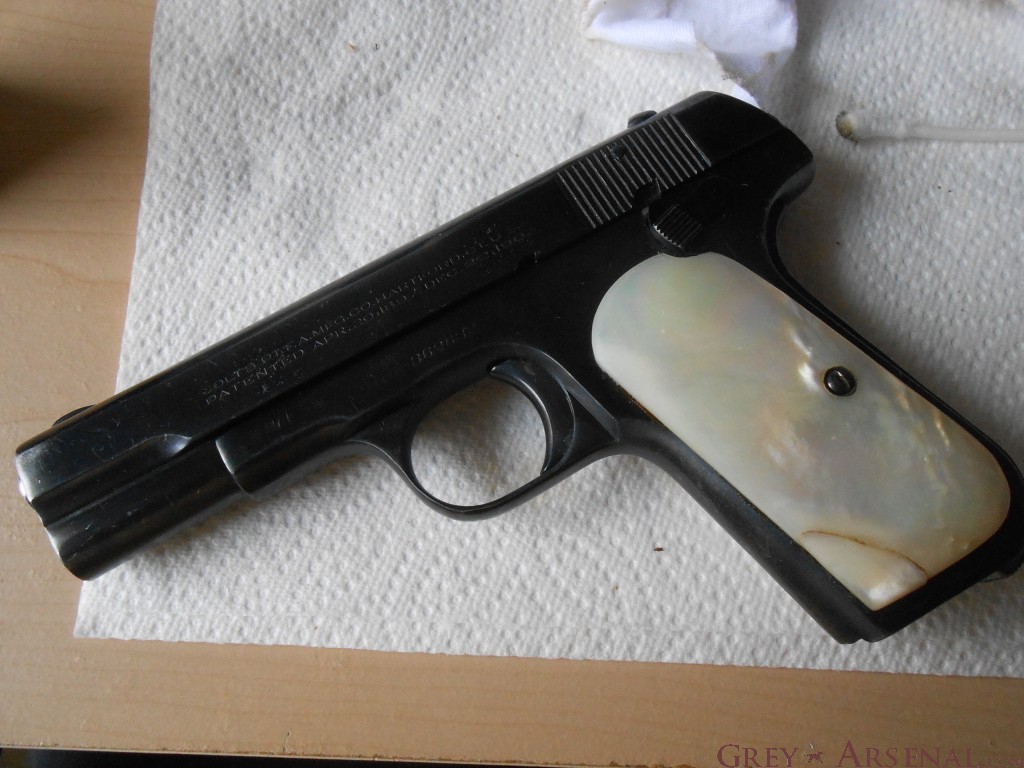So, yet again, I’d intended to do a primer on getting a maintenance kit up and running with all kinds of fun links, opinions on products, and pictures- but yet again, something came up that I thought I’d address immediately. I still may make this a bonus post, however, and still do the post I’d orginially planned, especially as this one will likely be a to-be-continued as I wait for parts and test solutions at the range.
Right, so on to business- I’ve fallen victim to a problem that seems pretty widespread in late Gen 3 (~2013) and Gen 4 Glock 17s and 19s. Begin typing “Glock 19 er” into google, and it’ll go ahead and complete that thought for you.
It would seem that many people with these guns are getting the original Glock Perfection(tm) experience for the first 600-1000 rounds, but then, startingly, began experiencing extremely erratic ejection behavior along with several flavors of FTEs. Mine began at about 600 rounds right on the nose- opened the box of the same PMC Bronze that I’d had zero problems with for more than half of the previous 600 rounds (I’ve been talking this G19 up like crazy, seriously, 0 issues with anything I wanted to feed it, it felt like this thing was magic up until this point). Was all poised to take this thing up to 650 rounds, and within the first 2 magazines I experienced 2 FTEs and noticed some brass marks on the front of the ejection port. Made it through 40 rounds with no additional problems before handing the Glock off my lady friend, who, upon commencing firing, was greeted by a hot case-mouth to the cheek, followed by a strike to the forehead. After clearing and checking the weapon, nothing seemed broken or out of place (aside from previously noticed brass marks on the front of the ejection port), so I loaded another magazine and tested it. 4 of the 15 rounds struck me in the forehead or landed on the top of my head. 1 of the rounds FTEd, and they all seemed to be ejecting fairly weakly.
For reference, here’s the information on this weapon:
Glock 19 gen 3
S/N range: VEX***
Test Fire Date: 6/5/13
So, after taking it down and having a look, then quite a bit of research, and quite a bit of ignoring the fanboys at Glock Talk who will blame any and all malfunctions on sissy wrists and not shooting like a man, I’ve learned the following:
- At or around Oct. 2010, Glock began to use a different process to manufacture internal parts including the locking block, firing pin, and of note to us here, the extractor.
- The manufacturing process in question is “MIM” or Metal Injection Molding. This is in contrast to the previous machined/tooled parts which were of much higher quality. This was clearly done as a cost-cutting measure. There have been cases of other manufacturers switching to MIM parts and also having severe quality problems.
- The QC on the LCI (loaded chamber indicator) extractors, specifically the 9mm ones, seems to have suffered to the point that they’re out of spec, though Glock wont admit it, and many of them have been measured and shown increased distance between the Breech Face and Extractor Claw, allowing too much play with the case as it’s being extracted.
- This problem, combined with the fine-pointed shape of the original ejector pin (marked 336), has caused the erratic ejection pattern, mostely due to the round bouncing around haphazadly around between the breech face and interior of the slide before finding it’s way out, or not, in the case of the FTEs experienced.
- Glock has been rather cautious to not put out any direct statements about the problem, but have redesigned the ejector to a more broad shape (now marked 30274), and have been replacing the older ejector on Gen 4 pistols sent in for service that were having this problem. Sadly, it usually takes a couple of round trips before any progress is made, and even after all that, many people report the problem is not solved.
So, that being said, I’m going to work this out myself, and avoid several months of thumb twiddling each time wondering if my gun is going to come back from Smyrna, GA in working condition, or if it’s just going to nail me in the forehead and/or try to burn my SO’s cheek off again. I’ll start with the cheap (and in this case, the most widely reported solution), and work my way from there. First stop, replacing the 336 ejector with the newer 30274 ejector. Now, since you can’t just buy the ejector, as that would be WAY too easy, you have to buy a replacement trigger housing. But- they don’t make a gen3 trigger housing with the 30274 ejector (they probably they don’t want to admit there’s a problem), we need to order a gen 4 trigger housing, extract the ejector pin, and swap it into my gen3 trigger housing. Luckily, it’s an easy enough job, and the new trigger housing is only $9.95. You may want to go ahead and order a new gen3 housing with the 336 pin in it, and swap those, just so you’re not altering your original in any way, but I’m not going to worry about that.
*UPDATES TO COME* The first part is in the mail, later updates will come. Just in case you’re following along and want to go ahead and get all parts in one go and not have to play the waiting game in case the ejector doesn’t fix your problem- my plan B is either swapping in a Lone Wolf Extractor or (more interestingly) swapping in a .45ACP extractor used on the G21/30. This has reports of being a good fix, because the parts are dimensionally similar enough to fit, and the .45 extractor has a slightly shorter gap between breech face and claw. It also holds the case at a slightly different angle, more reminicent of the older non-LCI (loaded chamber indicator) extrators on gen 2 Glocks (back when they worked like a charm).
UPDATE #1
Thanks to Mr. Humke at GlockParts.com, LLC, I received my new Gen4 Trigger Housing with the 30274 ejector within 3 days. The difference between the new one and the older 336 ejector was pretty huge.
Sadly, due to my schedule, I haven’t been able to get back to the range to test it just yet, but hand-cycling snapcaps produced a perfect pile at the weapon’s 4 ‘o clock, so we’ll see. *UPDATES TO FOLLOW*
As for the installation, I’d say if you’re comfortable field stripping, this isn’t too much of a stretch. The Glock is easier to work on than I thought, they weren’t kidding when they say how few parts there are. The only tools you’ll need are a punch, preferrably a Glock Disassembly Tool (pictured below) and a tiny flathead screwdriver. After removing the slide from the frame, you’ll need to use the tool to push out the marked pins from the frame. These are different sizes, so be sure to keep track of which one’s which (though it’s easy, big, medium, small, from front to back).
After this, you’ll need to use something to pry up the Locking Block (pictured below). It should come right out rather easily. When removing this, note the position of the Slide Catch Lever, you’ll need to put this back in afterwards.
 After the Locking Block is out, you’ll be able to remove the Trigger (along with the Slide Catch Lever) and Trigger Housing out of the frame. You can disassemble further, but this is really as far down as you need to go. The Ejector pin simply pulls forward out of the Trigger Housing, though you’ll likely need to use the flathead to push it from the rear to get it started (you can see rear of the Ejector pin at the rear of the Housing). After getting it far enough out, either pull out with your hand, CAREFULLY use the screwdriver to pry it out from the front, or use a pair of needle nosed pliers (you’ll want to wrap cloth or electrical tape so as to not scratch) to pull the pin out the rest of the way.
After the Locking Block is out, you’ll be able to remove the Trigger (along with the Slide Catch Lever) and Trigger Housing out of the frame. You can disassemble further, but this is really as far down as you need to go. The Ejector pin simply pulls forward out of the Trigger Housing, though you’ll likely need to use the flathead to push it from the rear to get it started (you can see rear of the Ejector pin at the rear of the Housing). After getting it far enough out, either pull out with your hand, CAREFULLY use the screwdriver to pry it out from the front, or use a pair of needle nosed pliers (you’ll want to wrap cloth or electrical tape so as to not scratch) to pull the pin out the rest of the way.
Once you have both pins out, push the 30274 ejector into the Gen3 housing, making sure it’s fully seated, and reassemble your weapon in reverse order. The only tip I have here is to get the Slide Catch Lever in place after the trigger, then put on the Locking Block, which compresses the spring. Use your Glock Disassembly Tool to help align things when reinserting the roll pins.
UPDATE #2: Confirmed Fixed.
Well, there we have it folks. Fired 65 rounds today, nearly all perfect 4-5 o’clock ejections with one stray towards 6 o’clock, but soared a few feet over my head. I think we have a winner. Time (well, a few hundred more rounds) will tell, but based on how miserable the last 35 rounds were prior to replacing the ejector, compared to how it performed today, I’m going to have to call this one a win. GLOCK- please start using the 30274 ejector in all current production 9mm models, not just the Gen4 models. That is all.

